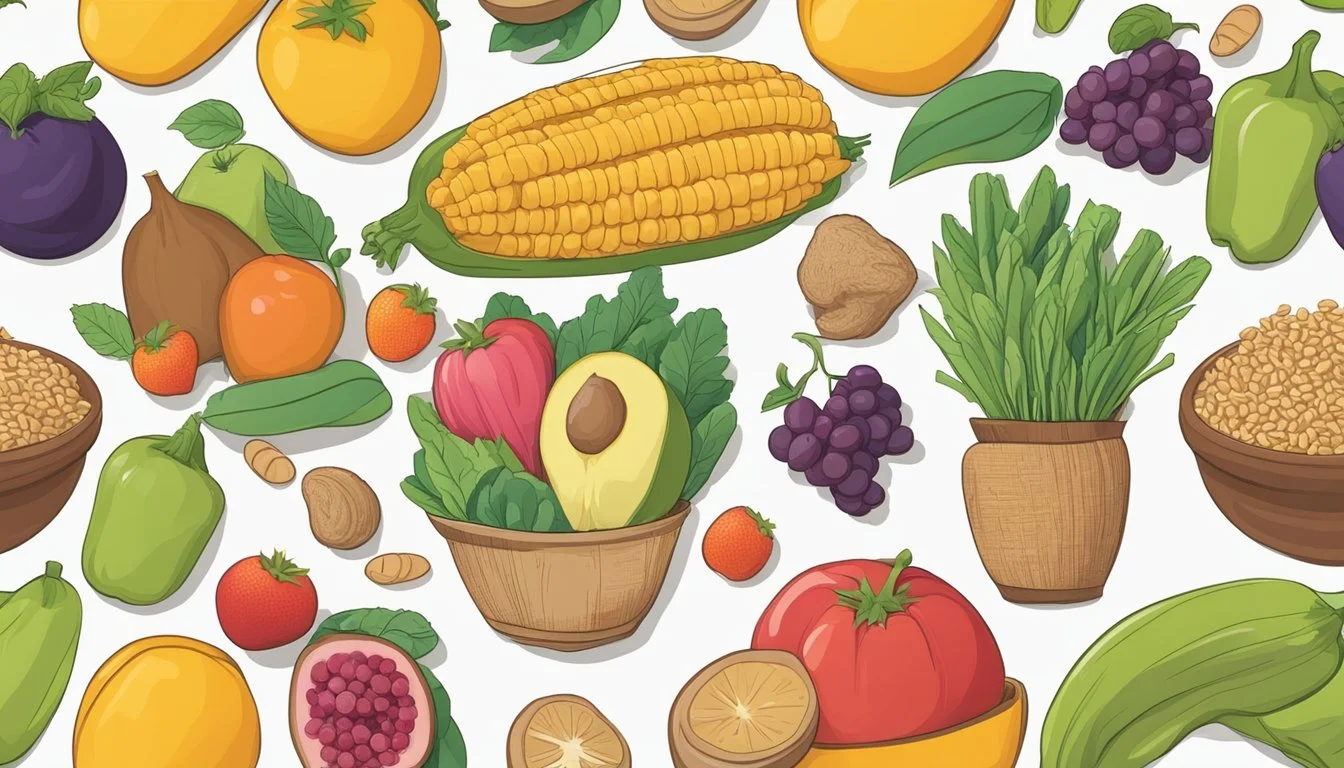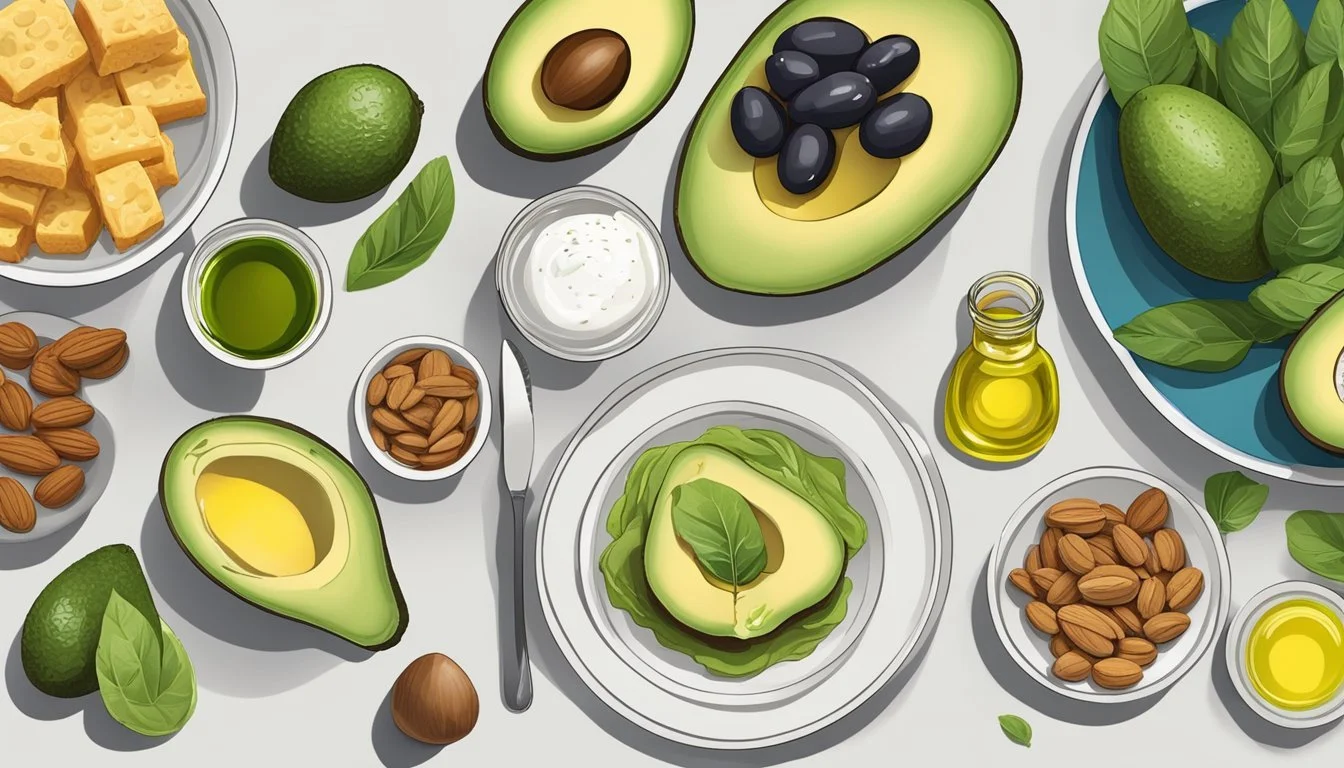High-Fat Diet: Budget-Friendly Strategies for Healthy Eating
Adopting a high-fat diet, such as the ketogenic diet, often comes with a preconception that it is inherently expensive due to the emphasis on quality fats and proteins. However, it is possible to follow a high-fat dietary regimen without breaking the bank. A ketogenic diet primarily consists of healthy fats, adequate protein, and low carbohydrates, which transforms the body's energy utilization process from relying on glucose to burning stored fat for fuel.
The notion of integrating more healthy fats into one's diet can be daunting when considering the budgetary constraints many face. Yet, choosing the right types of fat is crucial. Trans fats and certain saturated fats are discouraged for health reasons, whereas mono- and polyunsaturated fats, such as those found in olive oil, avocados (how long does avocado last?), and nuts, are encouraged. It's essential to incorporate these healthier fats wisely, focusing on portion control and cost-effective sources to ensure the diet remains both affordable and beneficial.
It's worth noting that while the keto diet prioritizes fats, the quality and source of the fat are just as important as the quantity. Affordable strategies, such as opting for in-season produce, purchasing from bulk bins, and embracing less expensive cuts of high-fat meats that can be cooked to tender perfection, allow for adherence to this diet without overspending. Maintaining a healthy high-fat diet on a budget is indeed feasible with careful planning and savvy shopping techniques.
Basic Principles of a High-Fat Diet
Adopting a high-fat diet involves a focused consumption of dietary fats while managing protein and carbohydrate intake. The goal is to leverage fats as the primary energy source, recognizing their role in nutrition and health.
Understanding Macronutrients
Macronutrients are the dietary components that the body needs in large amounts: fat, protein, and carbohydrates. In a high-fat diet, fat intake is prioritized, often constituting about 60-75% of total caloric intake, with protein and carbohydrates making up the remainder. Balanced consumption of these macronutrients is crucial in maintaining a healthy diet.
Benefits of Healthy Fats
Consuming healthy fats—primarily monounsaturated and polyunsaturated fats—can support heart health and may contribute to weight management. Foods rich in healthy fats include olive oil, avocado oil, nuts, seeds, and fatty fish. Research suggests that these fats positively impact cholesterol levels and may lower the risk of type 2 diabetes.
Risks of Unhealthy Fats
It's essential to limit intake of unhealthy fats, such as trans fats and excessive amounts of saturated fats, which can negatively affect heart health and raise cholesterol levels. Saturated fats should be consumed in moderation, while trans fats, often found in processed foods, should be avoided as much as possible.
The Role of Ketosis
In a high-fat diet, especially the ketogenic diet, the body enters a state called ketosis. Ketosis occurs when there's a shift from using carbohydrates for energy to burning fats instead. This can lead to weight loss and has been studied for its potential benefits in managing epilepsy, type 2 diabetes, and other metabolic conditions.
Effective Budgeting Strategies
When adopting a high-fat diet while on a budget, individuals should focus on strategic planning, astute shopping practices, and a balance between cost and nutritional value. These strategies ensure that one maintains a healthy diet without overspending.
Planning and Shopping Tips
Meal Planning: One should create a detailed meal plan for the week, considering the high-fat dietary requirements. By preparing a specific grocery list based on this plan, shoppers avoid impulse purchases and stick to their dietary and budgetary goals.
Grocery List: Craft a list to include only the items necessary for the upcoming meals. Prioritize whole foods rich in healthy fats, such as avocados, nuts, and olive oil.
Balance: Achieving a balance between budget-friendly items and nutritional value is crucial. Include a variety of high-fat proteins, vegetables, and dairy to ensure a diverse nutrient intake without compromising on the quality.
Cost Comparison and Bulk Buying
Budget-conscious shoppers benefit from comparing costs across different stores and opting to purchase in bulk when savings are evident, especially for staple items within the high-fat diet.
Bulk Buying: Assess which high-fat staples, like oils, nuts, or certain cheeses, can be purchased in bulk to save money in the long term.
Price Tracking: Keep track of price trends for frequently purchased items and take advantage of deals or discounts when they align with the diet plan.
Seasonal and Local Shopping
Purchasing seasonal and local produce can lead to significant savings while ensuring the intake of fresh and nutrient-dense foods.
Seasonal Produce: Opt for fruits and vegetables that are in season; these are often priced lower and are at their nutritional peak.
Local Sources: Explore local farmers' markets for competitive prices on organic and high-fat diet-friendly produce, which supports the local economy and reduces transportation costs.
Optimizing Your Meal Plan
To eat healthy within a budget, one needs to focus on meal composition, protein selection, the use of fats, and vegetable incorporation. Strategizing these components can result in a nutritious and cost-effective diet.
Building a Balanced Plate
A balanced plate contains a mix of macronutrients: proteins, carbohydrates (with an emphasis on fiber), and healthy fats. For a high-fat diet, one can structure meals to include a smaller portion of proteins and a generous array of vegetables, complemented by healthy fats. An example might be a salmon fillet (rich in omega-3 fats) with a side of steamed broccoli (how long does broccoli last?)and a salad topped with avocado slices.
Incorporating Budget-Friendly Proteins
Proteins are crucial, but they can be expensive. Cost-effective options such as chicken thighs, eggs, and canned tuna (What wine goes well with tuna?) offer versatility without the hefty price tag. For instance, chicken thighs can be used in recipes ranging from baked dishes to stews, while eggs can serve as the foundation for omelets filled with veggies like spinach and mushrooms.
Utilizing Fats and Oils Wisely
Healthy fats are a cornerstone of a high-fat diet. Using olive oil and avocado oil can introduce heart-healthy fats into your diet. A drizzle of olive oil on a mixed vegetable stir-fry (What Wine Pairs Perfectly With Vegetable Stir-Fry?) or a spoonful of avocado oil to pan-sear fish are simple ways to enhance flavor and nutrient intake. Nuts and seeds are also excellent for snacking or as a crunchy salad topping.
Adding Variety with Low-Cost Vegetables
Vegetables should not be overlooked due to their numerous health benefits and fiber content. Budget-friendly and nutrient-dense options include zucchini, cauliflower, kale, and bell peppers. They can be roasted, grilled, or incorporated into soups and stews for added texture and flavor. Simple vegetable stir-fries with a protein like tofu or pork offer an easy, cost-effective meal rich in both nutrients and satisfaction.
Smart Choices for Breakfast, Lunch, and Dinner
Eating a high-fat diet on a budget does not mean compromising on health or flavor. With the right meal plan, one can enjoy nutritious and satiating foods throughout the day. Here's how to make wise food selections for breakfast, lunch (What wine goes well with lunch?), and dinner that are cost-effective yet rich in healthy fats.
Breakfast Options on a Budget
For breakfast, eggs are an inexpensive source of protein and healthy fats. They can be prepared in numerous ways – boiled, scrambled, or as omelets. Pairing them with avocado for a dose of monounsaturated fats enhances the meal's nutritional value. Overnight oats are another cost-friendly option. By combining oats with seeds and nuts, one can enjoy a breakfast that's both filling and heart-healthy.
Boiled Egg and Avocado Toast
1 boiled egg
1 slice of whole-grain bread
1/2 sliced avocado
Overnight Oats with Chia Seeds
1/2 cup rolled oats
1 cup almond milk
1 tablespoon chia seeds
Sweeteners or fruits as desired
Affordable and Healthy Lunch Ideas
Lunches that balance cost and nutrition can easily incorporate tuna or chicken, mixed with vegetables for a filling salad. Utilizing olive oil as a dressing adds healthy fats without significant expense. Whole grain wraps filled with beans, cheese, and nuts can also serve as a portable and cost-efficient lunch solution.
Tuna Salad with Mixed Greens
1 can of tuna (drained)
Mixed salad greens
Sliced cucumbers and tomatoes
Olive oil and vinegar dressing
Chicken and Avocado Wrap
Whole grain wrap
Grilled chicken strips
Sliced avocado and vegetables
A sprinkle of cheese
Dinner that Maximizes Nutrient Intake
Dinners can be a diverse affair, from grilled chicken or fish to servings of beef or pork - all excellent sources of protein and healthy fats when portioned appropriately. Complementing these proteins with a variety of vegetables like leafy greens or cruciferous veggies offers a nutrient-dense meal. Cooking with healthy fats such as in a stir-fry is another strategy to incorporate nutritious calories on a budget.
Grilled Salmon with Steamed Veggies
1 salmon fillet
Broccoli and carrots
Drizzle of olive oil
Herbs and spices to taste
Beef and Vegetable Stir-Fry
Lean beef strips
Mixed bell peppers and onions
Stir-fry in olive oil or avocado oil
Serve over brown rice or quinoa
Making smart food choices doesn't have to be costly. With a focus on whole foods, affordable proteins, and healthy fats, one can craft a high-fat diet that is both economical and nutritionally robust.
Savvy Snacking and Desserts
In maintaining a high-fat diet, choosing the right snacks and desserts can be both health-conscious and economical. Focusing on nutrient-dense and satisfying options helps avoid excessive spending while enhancing overall dietary quality.
Healthy Snack Alternatives
When it comes to snacks on a high-fat diet, the goal is to include items that are rich in healthy fats and protein while being low in added sugars. This approach ensures sustained energy and satiety between meals.
Nuts and Seeds: Almonds, walnuts, and chia seeds are excellent for a quick, nutritious nibble.
Cheese Varieties: Options like string cheese are convenient, high in fat, and a good source of calcium.
Nut Butter: Pairing nut butter with vegetables or low-carb crackers makes for a filling snack.
Vegetables: Dip crunchy veggies like zucchini sticks or broccoli florets in guacamole or full-fat yogurt-based dips.
Berries: Small servings of raspberries, blackberries, and blueberries can satisfy a sweet craving without excessive carbs.
Budget-Friendly Treats
Desserts can be part of a high-fat diet when chosen wisely and consumed in moderation. Value can be found in homemade options and by purchasing ingredients in bulk.
Dark Chocolate: A small square of high-cocoa dark chocolate provides antioxidants and can be a decadent treat.
Avocado-Based Desserts: Avocado can be the base for mousses and other creamy desserts (What wine goes well with creamy desserts?) rich in healthy fats.
Yogurt Parfaits: Layer full-fat yogurt with nuts and a sprinkle of berries for a cost-effective, diet-friendly dessert.
Fruit-Based Frozen Treats: Homemade popsicles made from pureed berries and cream are affordable and free from added sugars.
By making informed choices on snacks and desserts, one can enjoy a variety of tasty, satisfying options without straying from a budget-conscious, high-fat diet.
Hydration and Beverages
Maintaining proper hydration is crucial for overall health, especially when following a high-fat diet. Choosing the right beverages can have a significant impact on both hydration and budget.
Affordable Hydration Choices
Water: It's the most cost-effective and healthful hydration option. Tap water is generally safe, widely available, and costs far less than any other drink. For added flavor, one could infuse water with slices of cucumber or lemon.
Tea: Herbal, black, and green tea are affordable beverages that offer hydration with the added benefit of antioxidants. Buying tea in bulk can further reduce expenses.
Pro Tip: Always carry a reusable water bottle to avoid the need for purchasing drinks when out, which can add up in cost over time.
Limiting Expensive and Sugary Drinks
Soda and Juices: High in sugar and often expensive, these drinks can be detrimental to both one's health and wallet. If one craves a sweetened beverage, a healthful alternative is to opt for water with a splash of juice.
Drinks to Watch: Energy drinks and specialty coffees can also be high in calories, sugar, and sodium, not to mention expensive.
Budget-Friendly Tip: Make a habit of checking the labeling for sugar and sodium content to stay informed and make better beverage choices that align with health goals and budget constraints.
Addressing Dietary Restrictions and Preferences
When adopting a high-fat diet on a budget, it's vital to consider individual dietary restrictions and preferences. This can involve making informed choices to accommodate food allergies, vegetarian dietary patterns, or medical conditions such as diabetes.
Considerations for Food Allergies
Food Allergies: Understanding the spe cific allergens one needs to avoid is crucial. For instance:
Nuts and Seeds: Those allergic to nuts may opt for seeds like sunflower or pumpkin as nutrient-dense alternatives high in fats.
Dairy: If one is allergic to dairy, alternatives like coconut cream can offer a high-fat option for meals and recipes.
Budget-Friendly Tips:
Purchase seeds in bulk to save money.
Seek out local markets for fresh dairy alternatives at a lower cost.
Navigating a Vegetarian High-Fat Diet
Vegetarian Options: One can maintain a healthy high-fat diet by focusing on:
Vegetables: Avocados and olives (What wine goes well with olives?) provide healthy fats and can be added to a variety of dishes.
Dairy and Eggs: If not vegan, these can be excellent sources of fat and protein for vegetarians.
Managing Costs:
Buy avocados and olives in bulk when in season and preserve them.
Consider local farms for affordable, fresh eggs and dairy products.
Tailoring the Diet to Medical Needs
Medical Concerns: Those with specific medical conditions can still follow a high-fat diet with adjustments:
Diabetes: Focus on high-fat, low-carbohydrate foods to manage blood sugar levels. Foods like olive oil are beneficial here.
Cholesterol and Blood Pressure: Incorporate healthy fats from avocado and nuts, which can help manage cholesterol and blood pressure.
Money-Saving Strategies:
Compare prices and nutritional labels of different brands.
Use coupons and discounts when shopping for specialty items like coconut products.
Supplementary Resources and Support
Adopting a high-fat diet, such as a ketogenic (keto) diet, involves navigating through a wealth of nutritional information and support mechanisms. Individuals can augment their dietary journey by leveraging a variety of online tools and community groups, as well as staying informed through academic research. These resources offer practical support and evidence-based information to help maintain a healthy, high-fat diet on a budget.
Utilizing Online Tools and Apps
There is a plethora of online tools and mobile applications that can assist individuals in tracking their high-fat dietary intake, monitoring progress, and planning meals economically. Apps like MyFitnessPal and FatSecret allow users to log daily food consumption and view macronutrient breakdowns, which is crucial for those on a keto diet. Many of these apps come with barcode scanning features and expansive food databases, making it easier to manage diet specifics on the go.
Community Groups and Forums
Community support is essential for those looking to adopt and maintain a high-fat diet. Online forums such as Reddit's r/keto community and Facebook keto diet groups provide platforms where individuals can share experiences, seek advice, and find motivational support. These support groups often share budget-friendly recipes, tips for meal prepping, and discounts for keto-friendly food products, offering a collective resource for cost-effective diet management.
Reviewing Academic and Scientific Research
Substantiating dietary choices with scientific evidence is important for health and safety. Resources like PubMed and Google Scholar offer access to numerous studies and academic research papers on the effects of high-fat diets. Individuals can find peer-reviewed articles exploring the efficacy, health implications, and nutritional considerations of the keto diet, ensuring their dietary practices are grounded in credible research. By reviewing this scientific literature, individuals on a high-fat diet can make informed decisions regarding meal planning and nutritional balance.







